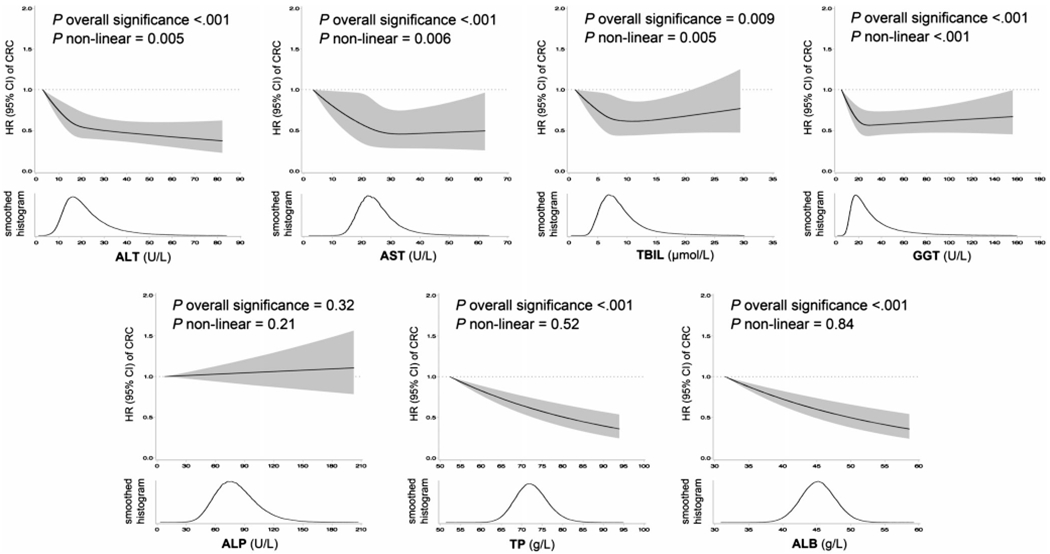FIGURE 1.

Hazard ratios (95% confidence intervals) of colorectal cancer associated with circulating levels of liver function markers and the smoothed histograms of liver function markers in the UK Biobank. The cloud represents the 95% confidence intervals of the hazard ratio. The distribution curve beneath represents the smoothed histograms of circulating liver function markers. Hazard ratios were estimated from multivariable Cox regression model adjusted for sex, race (white, non-white, unknown), fasting status, age at recruitment, Townsend deprivation index (continuous), waist circumference/hip circumference (continuous), height (continuous), body mass index (continuous), C-reactive protein (continuous), total physical activity (quintile), alcohol status and consumption frequency (never, former, current—special occasions only, current—1-3 times per month, current—1-2 times per week, current—3-4 times per week, current—daily/almost daily, unknown), smoking status and intensity (never, former, current—<15 per day, current—≥15 per day, current—intensity unknown, unknown), frequency of red and processed meat consumption (never, <1, =1, 2-4, 5-6, ≥7 occasions per week, unknown), frequency of oily fish consumption (never, <1, =1, 2-4, 5-6, ≥7 occasions per week, unknown), family history of cancer (no, yes, unknown), educational level (college/university degree, non-college/university degree, unknown), regular aspirin use (no, yes, unknown), bowel cancer screening (no, yes, unknown) and overall health ranking (excellent, good, fair, poor, unknown). Nonlinearity was modeled by cubic regression splines with 4 knots. ALB, albumin; ALP, alkaline phosphatase; ALT, alanine transaminase; AST, aspartate transaminase; CI, confidence interval; CRC, colorectal cancer; GGT, gamma glutamyltransferase; HR, hazard ratio; TBIL, total bilirubin; TP, total protein
